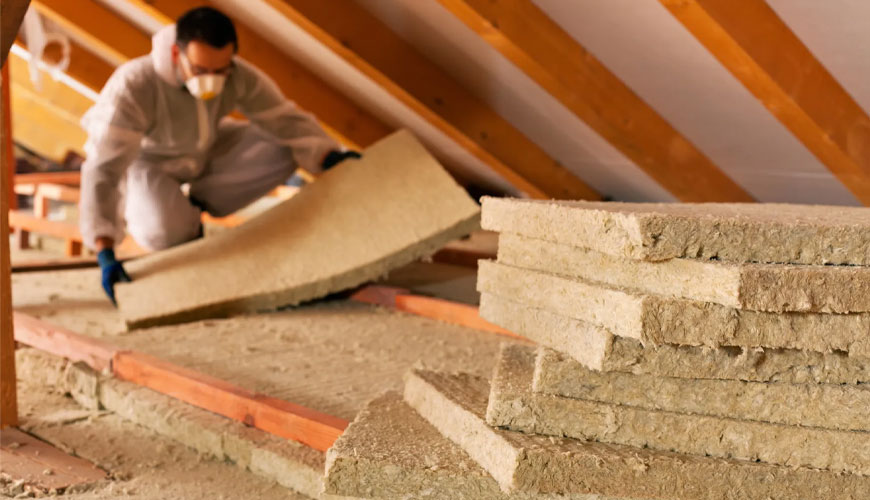

The effective thermal conductivity of insulating materials is measured according to DIN 10 at an average sample temperature of 52616 °C with a shielded heating plate device. This is sufficient for the construction industry, but insulation materials for heat tanks are generally exposed to higher temperatures in hot water tanks up to 95 °C.

The effective thermal conductivity increases with temperature. For dry insulation materials, this effect can be described with a linear approach.
Different types of insulation materials have been tested. As the main focus is on furnace heat storage, only stress resistant types have been selected.
Insulation materials are exposed to environmental influences (i.e. rain or moisture). Due to diffusion processes as a result of temperature or humidity gradients, the moisture content of the insulation may increase. High temperatures with high moisture content lead to a strong increase in effective thermal conductivity due to pore diffusion.
Effective thermal conductivity increases with temperature and moisture content. The moisture content mainly depends on the pore ratio and the pore structure of the insulation.
As an example, the effective thermal conductivity of foam glass granules and mineral wool is plotted as a function of temperature for different moisture contents.
If insulation materials are applied for operating temperatures well above the ambient temperature, the dimensioning of the insulation thickness should not be done by thermal conductivity according to DIN 52616.
In addition, the values specified in DIN 4108 part 4 are not sufficient for applications with higher operating temperatures.
Insulation materials are not always completely dry after delivery (depending on the type of insulation, moisture contents between 0,5 and 5% by volume are possible). Insulating materials exposed to environmental influences show increased moisture content.
Among the services provided by EUROLAB within the framework of material tests, there are also DIN 52616 standard tests.
To get an appointment, to get more detailed information or to request an evaluation, you can ask us to fill in our form and reach you.